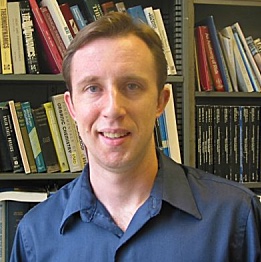A research team at the University of California, Los Angeles (UCLA) developed a detailed computer model that reveals how electrical signals that control and regulate cardiac functions are affected in episodes of congestive heart failure.
The team of medical doctors, scientists, and engineers created the “virtual heart” to help study the effects of new therapies for heart failure.
The computer model can simulate very small and subtle changes in the heart’s cells and tissues associated with drug treatment, and the drug’s larger impact on the heart as a whole. The changes are displayed by electrocardiogram (ECG), a common tools for detecting abnormalities in the heart’s electrophysiology.
The research was published June 23 in PLOS Computational Biology in the article “Electrophysiology of Heart Failure Using a Rabbit Model: From the Failing Myocyte to Ventricular Fibrillation.”
Congestive heart failure, a leading cause of death, occurs when the heart is unable to pump sufficient blood. An accelerated heart rate resulting from electrical disturbances called arrhythmias.
The virtual heart model, based on a rabbit heart, shows what happens to heart cells and tissue when levels and flow of calcium, potassium and sodium ions required for heart function are altered. The model also demonstrates what happens to the heart overall when malfunction or disease interrupt the balance of various critical chemicals and electrophysiologic components.
The paper coauthors observed that heart failure’s underlying electrophysiological mechanisms are not well understood. To investigate, they used a multiscale approach in their analysis of a virtual heart failure model, connecting its results to data from the ECG.
The heart failure model is derived from modifying a previously validated electrophysiology model for a healthy rabbit heart; they modified the cell electrophysiological activity by changing both membrane currents and calcium handling. The validated cell model was then used to simulate the electrophysiology of heart failure in a biventricular rabbit heart model. The researchers observed that changes introduced at the cell and tissue level increased the failing heart’s susceptibility to dynamic instabilities and arrhythmias under rapid pacing.
In ventricular fibrillation (VF), a leading cause of sudden death, the electrical wave of activation in the heart breaks up chaotically, rendering the heart unable to contract synchronously and pump blood to the rest of the body. The model of heart failure formulated and validated in the study allowed scientists to evaluate the arrhythmogenic potential of individual and combined electrophysiological changes.
The team aimed to apply the numerical model to linking changes at the cellular and tissue level in a failing heart to a numerically computed ECG, which allowed them to characterize the precursor and risk of VF. The study revealed that VF can be caused by a slowdown in cellular processes at the top of the heart during heart failure.
In order to understand the mechanisms underlying VF in heart failure, the researchers designed a test to simulate a heart failure patient performing physical exercise, which showed that under elevated heart rates with changes in pacing, the patients are more prone to VF because of a conduction blocking mechanism.
The UCLA research was supported by the National Institutes of Health and the American Heart Association.
The study was coauthored by UCLA graduate student in mechanical engineering Aditya V. S. Ponnaluri; postdoctoral scholar in radiological sciences and in bioengineering Luigi E. Perotti; graduate student in molecular, cellular and integrative physiology Michael Liu; professor of medicine Zhilin Qu; UCLA chief of cardiology and professor of medicine James N. Weiss; professor of radiology and bioengineering Daniel B. Ennis;professor of integrative biology and physiology Alan Garfinkel; and mechanical and aerospace engineering professor William S. Klug.
 Tragically, Klug was shot and killed June 1 in his office. The suspect then committed suicide in a UCLA engineering building.
Tragically, Klug was shot and killed June 1 in his office. The suspect then committed suicide in a UCLA engineering building.
“Bill led the virtual heart project,” said the UCLA study’s principal investigator Garfinkel, who holds several faculty appointments in the UCLA College and the David Geffen School of Medicine at UCLA in a release. “His work will live on in this model, which can potentially help many who suffer from arrhythmias in congestive heart failure.”
UCLA has established a fund to support William Klug’s wife, Mary Elise, and his two children, aged 7 and 9. To contribute to the The Klug Family Support Fund visit the fund website.
A video of the UCLA heart model during ventricular fibrillation can be viewed at: https://drive.google.com/file/d/0B0EOxzTfVZV2NjNfRkRFbndBOEE/view?pref=2&pli=1
Sources:
University of California, Los Angeles (UCLA)
PLOS Computational Biology


